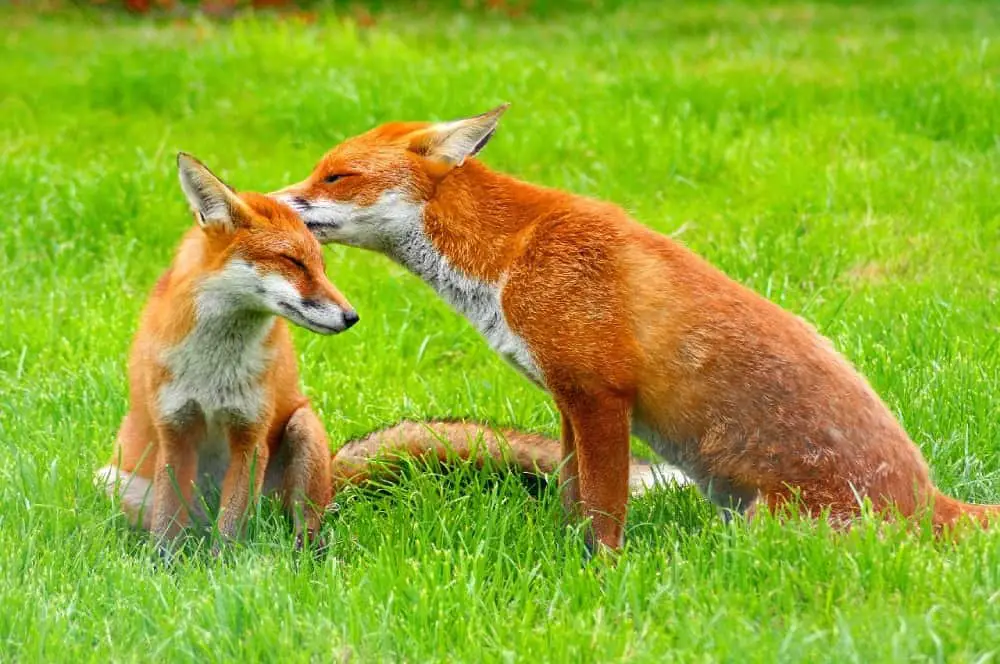
Did you know how many types of foxes live all over the world? If you want to know more about this diverse species, look no further here; we discuss everything about foxes.
Twelve fox species are called true foxes. They are Red fox, Fennec fox, Cape fox, Ruppel’s fox, Pale fox, Arctic fox, Tibetan sand fox, Blanford’s fox, Bengal fox, Corsac fox, Kitfox, and Swift fox. The most common fox species is the Red fox, with about forty-five subspecies recognized today.
Foxes are fascinating, intelligent, and playful animals. Let’s find out more about the twelve true types of foxes and their different characteristics.
Table of Contents
The 12 True Types of Foxes
These are the twelve types of foxes considered true type species of foxes classified under the Vulpes genus. They live worldwide and come in many different sizes, shapes, and coat colors and are all related. About 45 subspecies of foxes have branched off from the Vulpes genus, but here we only discuss the twelve true fox species.
Vulpes Species:
- Red fox – Vulpes vulpes
- Fennec fox – Vulpes zerda
- Arctic fox – Vulpes lagopus
- Bengal fox – Vulpes bengalensis
- Blandford’s fox – Vulpes cana
- Corsac fox – Vulpes corsac
- Cape fox – Vulpes chama
- Tibetan fox – Vulpes ferrilata
- Kit fox – Vulpes macrotis
- Pale fox – Vulpes pallida
- Rüppel’s fox – Vulpes rueppellii
- Swift fox – Vulpes velox
Red Fox
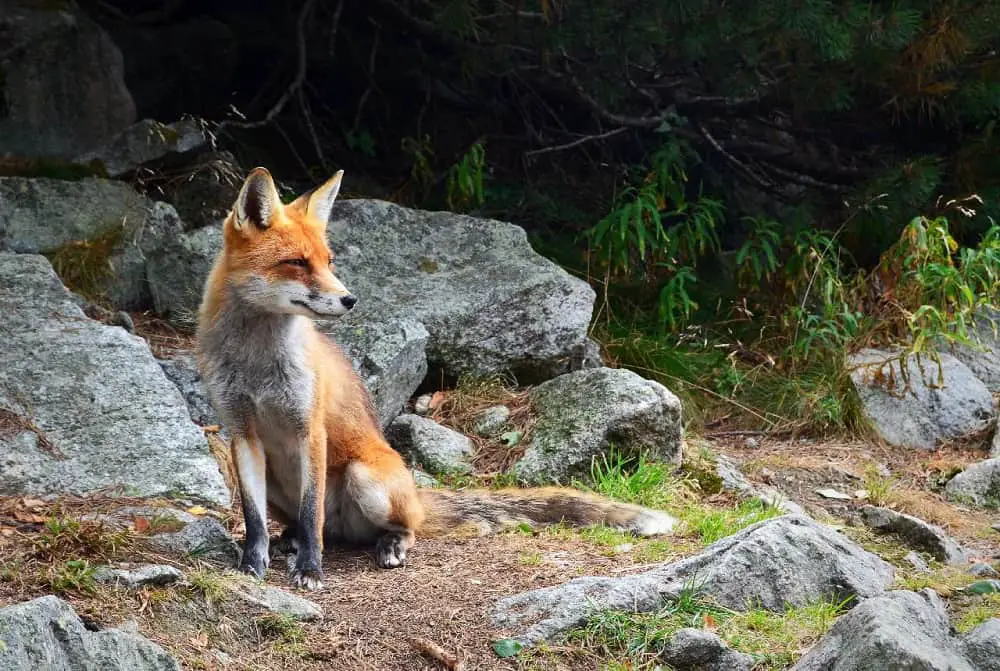
Red foxes are found worldwide in many different habitats, from grasslands, forests, deserts to mountain ranges. The red fox species are the most common of all types of foxes.
You can find Red foxes in every northern region around the world. They learned to adapt to human environments like suburban areas, farms, and even larger towns. The red fox is extremely intelligent and resourceful and known to be quite cunning.
The red fox is mainly an omnivore. They hunt alone and eat birds, rabbits, rodents, small game, vegetables, fish, frogs, worms, and even fruits. Their diet can be as diverse as their habitat. In nature, Red foxes can live from 3 to 4 years and much longer in captivity.
The Redfox’s thick tail helps keep its balance and is used as a warm blanket in winter during cold weather and to signal and communicate with other foxes. Red foxes leave scent deposits to communicate to other foxes by urinating on trees and rocks to mark their territories.
The Winter season is mating season. The female gives birth to a litter of 2 to 12 pups generally. Red foxes are born gray or brown.
Their red coat grows only after a month. The color variations of some red foxes are reddish-brown, golden, black, and even silver. The male and female both raise the pups all summer long until fall when they move on independently.
Fennec Fox
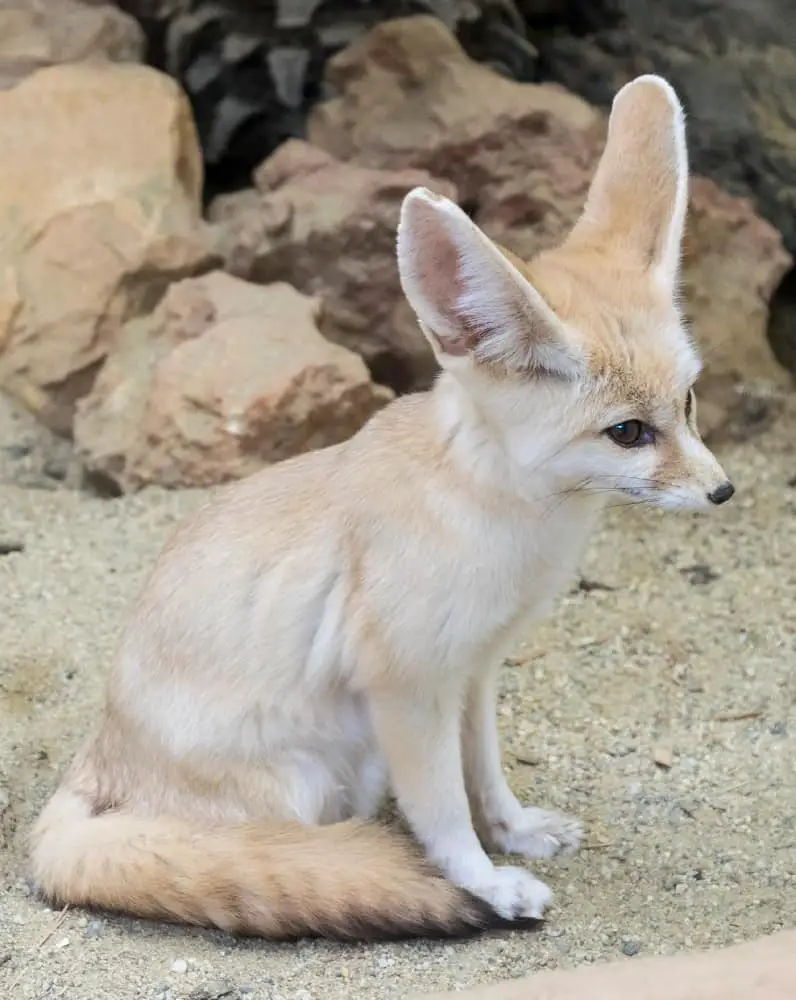
The cream-colored, black-tipped tail fennec fox, with its six inched-sized ears, is the smallest fox of all foxes. They live in the Sahara Desert as well as in North Africa. They are mainly nocturnal, so they don’t have to deal with the hot desert heat.
The big ears of a Fennec fox help it stay cool by dissipating body heat. Their ears also give them an advantage over prey and predators. They have incredible hearing due to the big ears that can pick up sounds even under the sand.
A Fennec fox has long, thick hair that keeps it warm during cold nights and shields them from sunburn in the day. The Fennec fox’s feet are hairy, which assists them like snowshoes through the desert sand where they live underground in dens. The female can give birth to 2 to 5 pups.
Fennec foxes live together in small communities of about ten animals. Male fennecs foxes also mark their territory with urine and get aggressive during mating season.
Their diet consists of rodents, eggs, insects, reptiles, and plants. They are adapted to go for long periods without water.
Arctic Fox
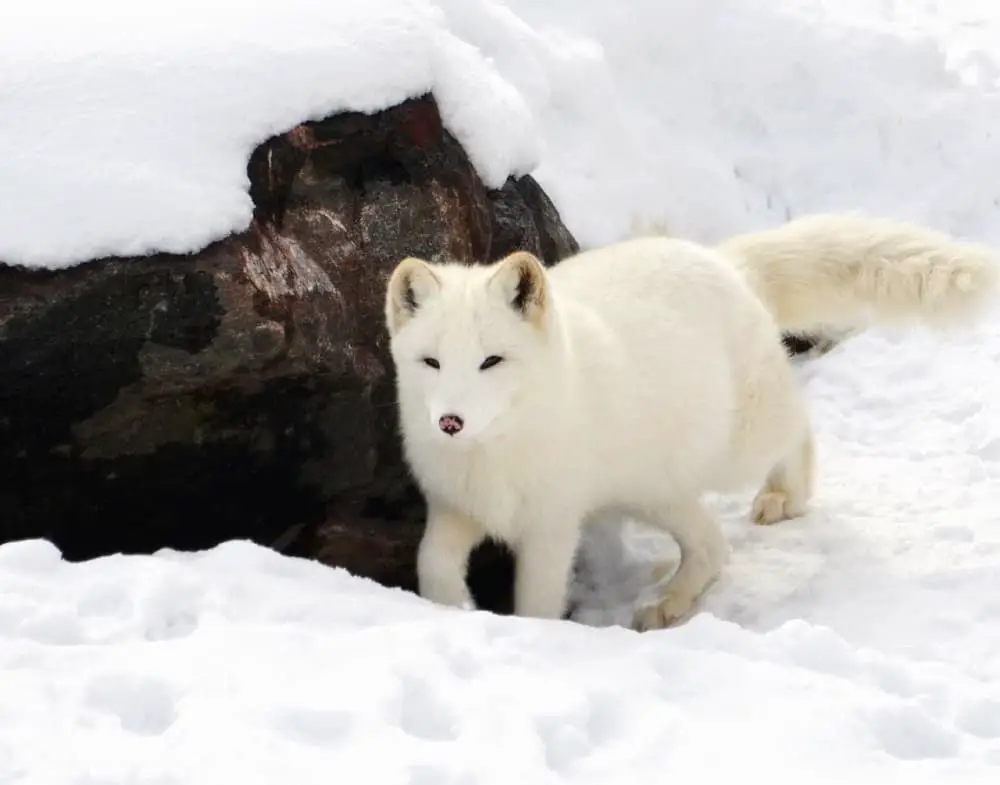
The arctic fox can survive freezing Arctic temperatures at –58°F. They have short ears, a short muzzle, and furry soles that help them stay in the icy climate. In a blizzard, Arctic foxes will tunnel under the snow to create a den to shield them.
They have beautiful white fur that camouflages them well by blending into the tundra’s ice and snow. The Arctic fox’s coat changes to a gray or brown color to help them blend into tundra’s plants and rocks during the summertime.
Arctic foxes eat birds, fish, rodents, and vegetables. Arctic foxes will follow polar bears when prey is scarce to scavenge leftover scraps from their kills during wintertime.
It uses its thick tail as a warm coat to provide cover when the temperatures drop. The female gives birth in spring to a litter of up to 15 pups.
Bengal Fox
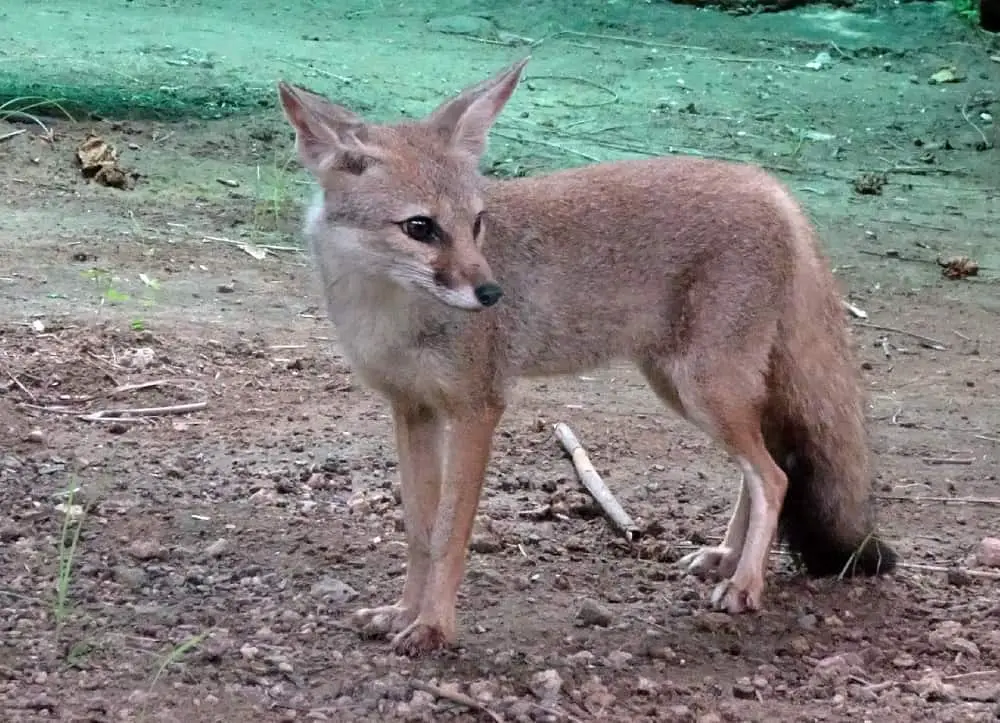
The Bengal fox or the Indian fox lives on the Indian subcontinent, Nepal, Himalayan foothills, southeast Bangladesh, and Pakistan. It is a medium-sized fox with a longish muzzle and a big bushy, black-tipped tail, almost 60% of its body.
The color of this fox’s fur changes according to the seasons. The Bengal fox’s coat is usually gray on the back and lighter on its belly. The ears are dark brown with black edges. Because they live in desert climates, their ears are a little more prominent than other foxes to thermoregulate body heat, just like the Fennec fox.
They are active before dusk and after dawn. During the heat of the day, they hide under plants and in underground dugouts with multiple escape routes. The female will give birth to 3 to 6 pups.
Blandford’s Fox
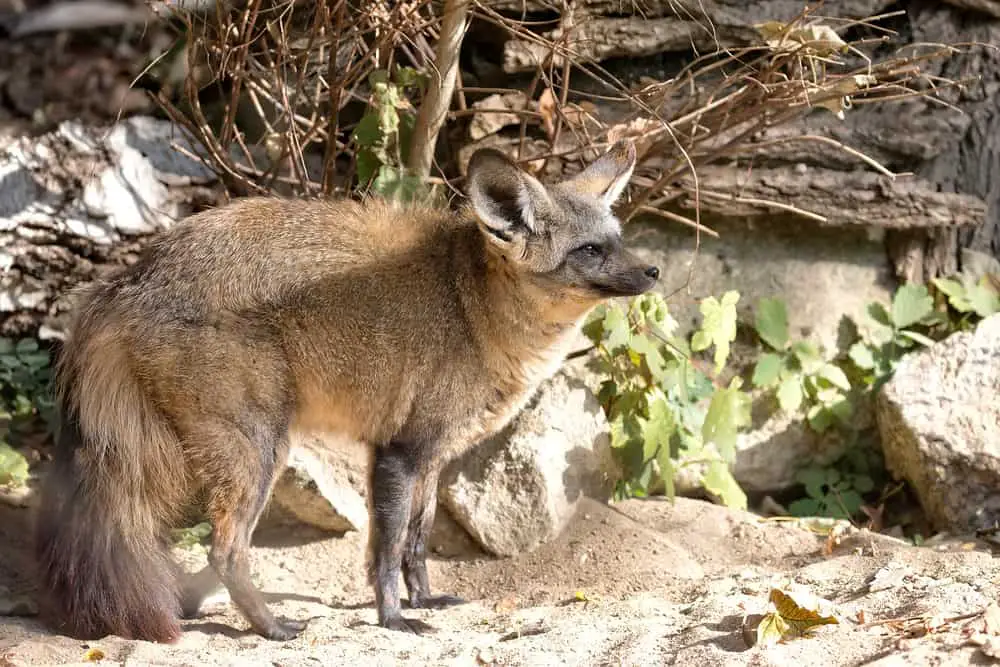
The Blanford’s fox is found in Central Asia, the Iranian Plateau, Turkmenistan, Afghanistan, and Pakistan. They are found in Jordan, Oman, Saudi Arabia, United Arab Emirates, and Egypt in the Middle East. The long bushy tail of the Blandford’s fox is almost the same length as its body, with brownish-grey color and light yellow on its belly.
In the winter, the Blandford’s fox fur is woolly and soft with a thick black undercoat and white fur speckles which helps it stay warm in the cold winter months. During the summer, the fur changes and is less dense, and the coat is lighter in color.
They are primarily nocturnal to avoid daytime predators. They are omnivores that feed mainly on insects like locusts, beetles, ants, termites, and grasshoppers. They will also eat wild fruits like olives, grapes and melons, and date palms. The female will give birth to 1 to 3 pups.
Corsac Fox
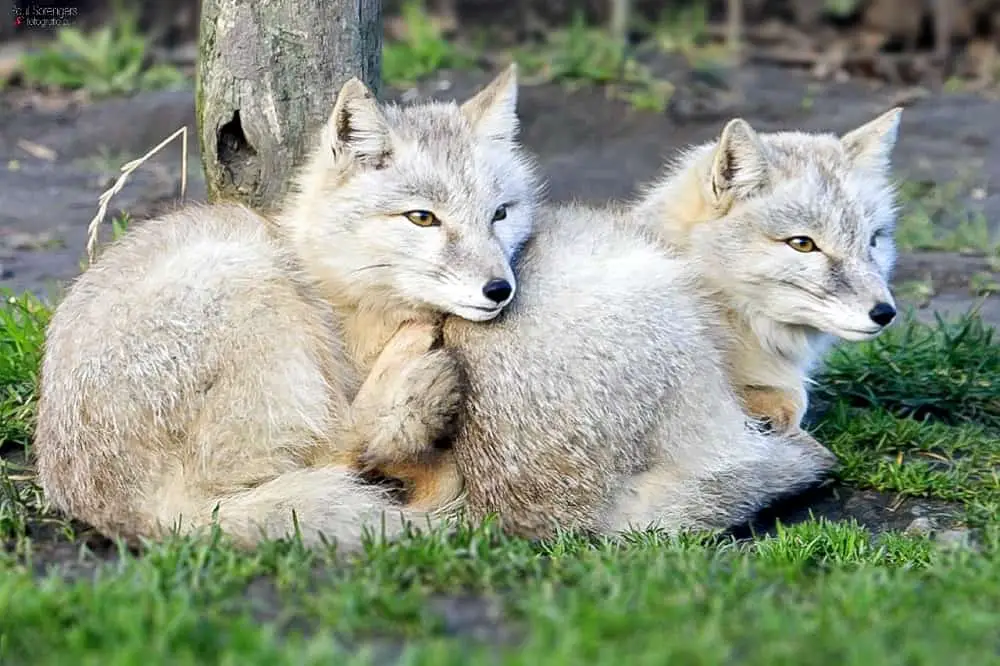
Corsac foxes are found in central and northeast Asia, Uzbekistan, Kazakhstan, Turkmenistan, northern parts of Iran, Tajikistan, Kyrgyzstan, Afghanistan, China, and Russia.
They have a grey to yellow coat with a lighter belly with fur that becomes thicker, almost straw-grey during the winter months, with a dark line along its back. They have excellent eyesight, hearing, and a keen sense of smell. Corsac foxes like to live in open grasslands and semideserts, but they stay away from dense vegetation, mountainous regions, and desert dunes.
They are mainly nocturnal to avoid daytime predators and humans. Corsac foxes are great climbers but don’t run very fast, and dogs can easily catch them when they are encountered.
They eat small rodents like ground squirrels, hamsters, voles, jerboas, and gerbils. Corsac foxes may also hunt larger prey like pikas and hares. They will eat plants and fruit when animal prey is scarce.
Like the Fennec fox, they are adapted to hot climates and can survive with little water. The female will give birth to 2 or 6 pups after 52 to 60 days of gestation.
Cape Fox
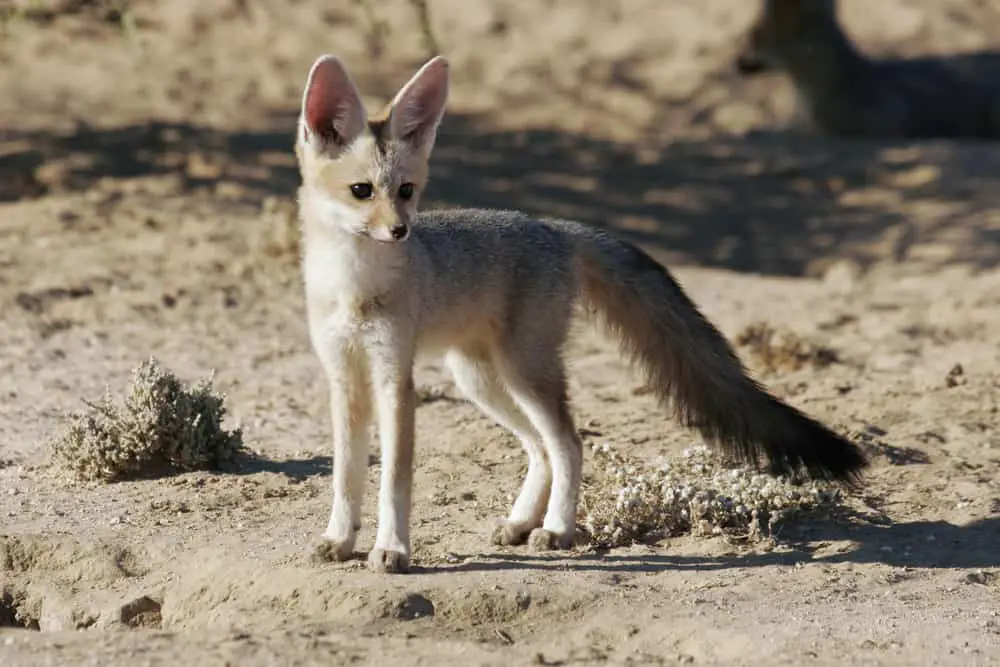
The smallest of foxes is the Cape fox. It has a silver and grey color coat with a bushy tail that helps with balance. Adults weigh less than 6 pounds and are 22 inches long.
It is the only “true fox” found in Southern Africa. It has large ears with excellent hearing. When it hunts for food, it uses its ears to locate prey and will quickly dig the small rodents out from under the ground.
They eat insects, small mice and will also forage on fruits and vegetables. The Cape fox is found in the central and western regions of Southern Africa. Recently it has been seen in the southwest up to the Indian and Atlantic Ocean coastlines.
Cape foxes are mostly nocturnal and are found in grasslands and lightly wooded areas. The female will give birth to 1 to 5 pups in October or November.
Tibetan Sand Fox
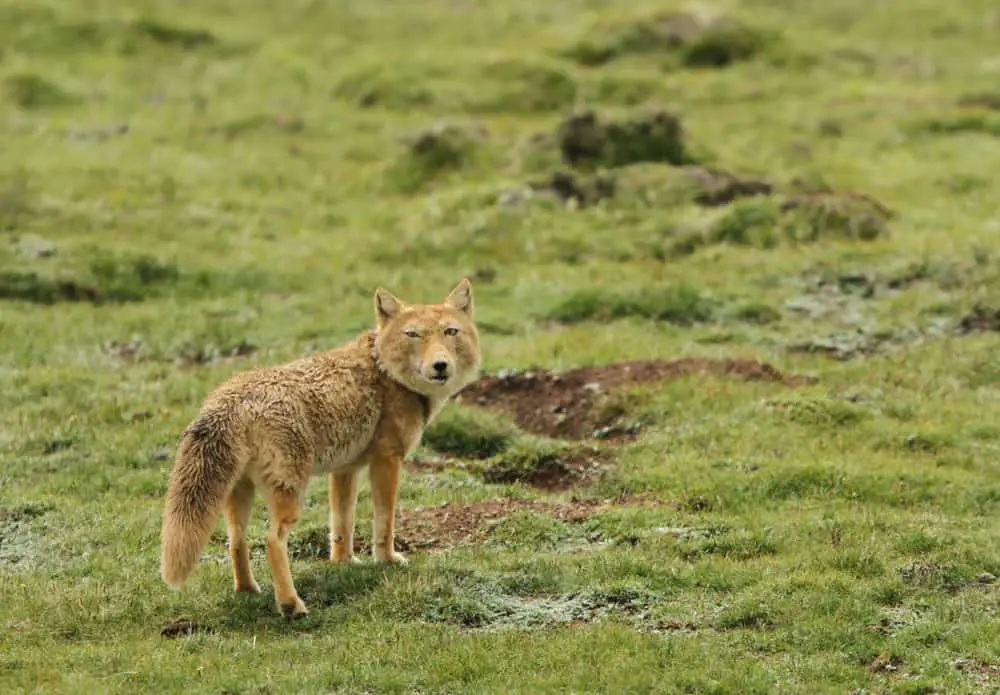
The Tibetan fox is a small fox found in Nepal, the Tibetan Plateau, Sikkim, Bhutan, and China. Its coat is soft and dense with a narrow muzzle and thick bushy tail. Its head, muzzle, neck, back, and lower legs are tan-colored, while its flanks, upper legs, cheeks, flanks, and rumps are grey. The tail has white tips.
Tibetan foxes will create dens to protect their pups and where they hide throughout the day.
Burrows can often be found near the base of rocks. Tibetan sand foxes are carnivores and scavengers who hunt pikas, small mice, wooly hares, lizards, and marmots. They will also eat from the carcasses of musk deer, antelopes, blue sheep, and other carcasses left by larger predators.
Tibetan foxes are monogamous and mate for life. The female will give birth to 2 to 4 pups in a prepared den.
Kit Fox

Kit Foxes are found in the dry and semi-dry southwest areas of North America. They are also found in Oregon, Colorado, California, New Mexico, Utah, Arizona, and Nevada.
They are the smallest fox species in North America. Kit foxes weigh around four pounds. Just like other foxes, they have large ears of about four inches long. Their coat is tan or grey, a bit darker on the back and lighter on the bellies.
Their large ears help locate prey and help the foxes cool down in the hot climate; blood vessels pass in the ears close to the open air, which cools the blood within, allowing the body to cool down.
Kit foxes are carnivores that hunt alone for rats, rabbits, mice, prairie dogs, jackrabbits, birds, insects, and lizards. If the prey is scarce, they will eat some plants and cactus fruit. Even though they hunt alone, they will live in family groups in dens under the ground.
Kit Fox pairs mate for life. In September, the females will start looking for a breeding den and give birth after two months in December to 3 to 4 pups.
Pale Fox
This small fox is found in Africa in the semi-dry Sahelian region, bordering the Sahara Desert, Mauritania, and Senegal through Nigeria to Chad and Cameroon.
It is well camouflaged with its sandy coat that blends in well with the sandy desert areas. The body coat is thin, light sandy in color, and white towards the belly. The coat is dotted with a blackish color and a dark line running along its back.
The Pale fox has an elongated muzzle with long whiskers, dark rings around its eyes, a long bushy tail with a black tip. The Pale fox also has large ears like other foxes who live in desert areas.
They are nocturnal live in shared dens with small family groups. They will stay in the dens during the day. The dens can be 10 to 15 meters long and as deep as 2 meters under the ground.
Pale foxes eat mice, rats, insects, and reptiles. They will also eat berries and plants when their prey is scarce. They get most of their water from their food and can go long periods without water.
The female gives birth after 51 to 53 days to 2 to 6 pups.
Rüppell’s fox
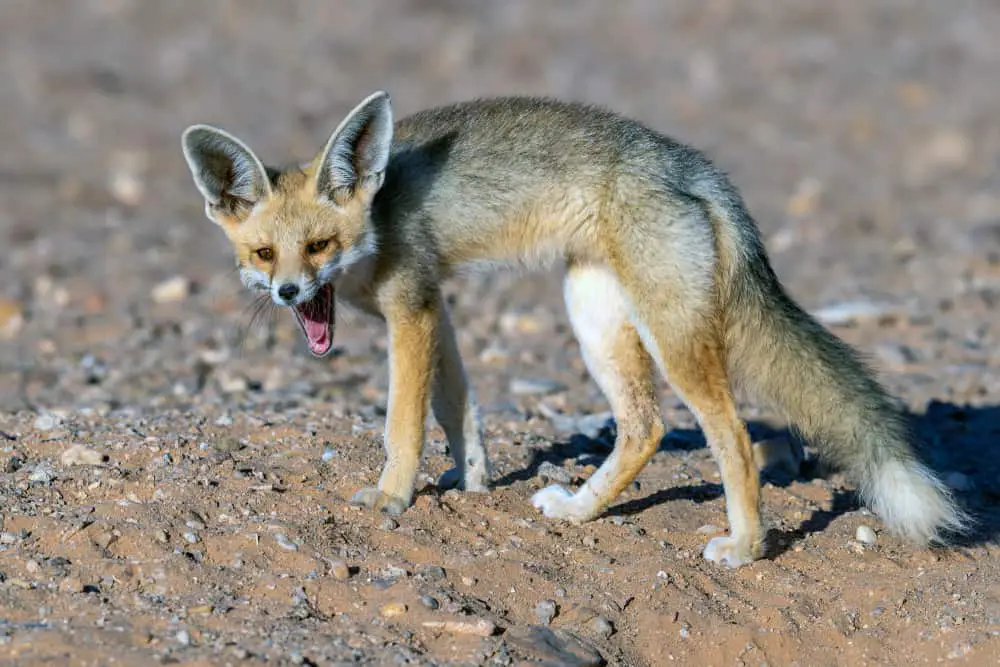
The Rüppell’s fox gets its name from German environmentalist Eduard Rüppell. They are found in North Africa, southwestern Asia, and the Middle east. They are seen through North Africa to the south of the Atlas Mountains, Mauritania to Morocco, Egypt, and Djibouti.
In the Arabian Peninsula, they are found from Syria, Palestine, Syria, Iraq, Jordan, and territories as far east as Iran, Afghanistan, and Pakistan. Rüppell’s foxes like to live in sandy or rocky deserts.
Their coats are sandy in color, with some white hair reddish on the back and pure white on the belly and the tip of the tail. They have fur on the pads on their feet to help them move quickly and distribute their weight in the desert sand.
Rüppell’s foxes are omnivores that feed on insects, beetles, small mammals, birds, and lizards. They will also feed on some plants like grasses and desert succulents, and palm dates.
They are monogamous and mate for life. The female will deliver 2 to 3 pups after 53 days gestation in a prepared den in November.
Swift Fox
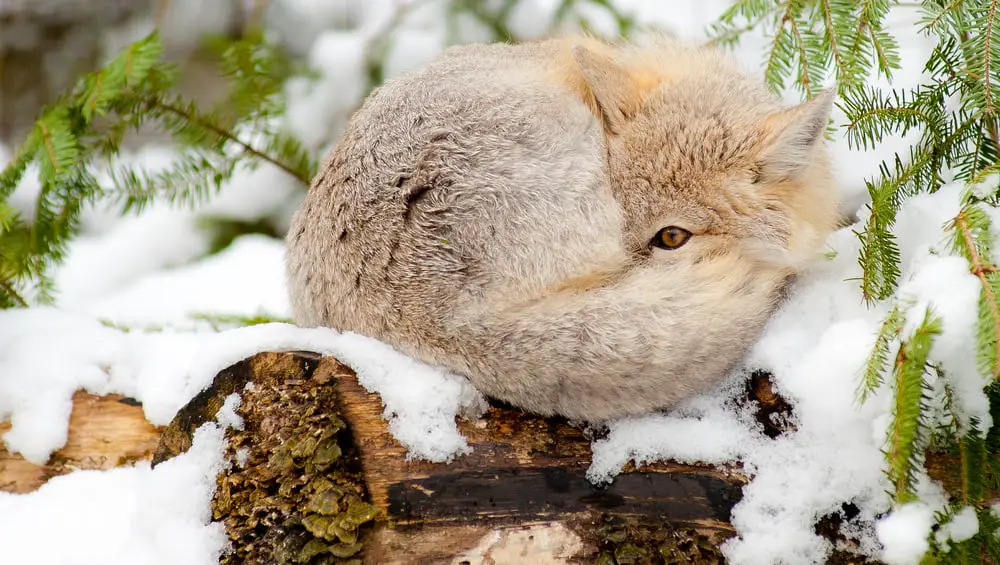
Swift foxes are small in build, almost the same size as house cats. They live in North America and can be found in regions of North America, like Colorado, Montana, Kansas, New Mexico, Oklahoma, Texas, Nebraska, and Wyoming. They like to live in short grasslands.
Their fur is a dark, grayish, tan color that becomes yellow to tan color along the sides and their legs with the chest and belly a pale yellow to white—black patches on their muzzles and black-tipped tails. Females and males look similar, but the males are more prominent. They will dig their dens in sandy soil on open prairies.
Swift foxes are nocturnal and social animals. They are mostly hidden away in their dens during the summer months, only venturing out at night.
In winter, during the midday, Swift foxes may spend some time outside. Their dens are underground burrows that can be 4 meters in length.
Swift foxes, as their names imply, are known for their speed. They run very fast; speeds of 30 mph to 40 mph were recorded. Their speed is helpful to avoid predators and hunt for food.
Swift foxes feed on mice, rabbits, birds, ground squirrels, lizards, and insects and feed on fruits and grasses. During the summer, adult Swift foxes will eat a lot of insects like grasshoppers, beetles, and grasshoppers and feed larger prey to their young. They will scavenge off the deer and other larger animals killed by predators.
Swift foxes are monogamous and mate for life. Breeding season occurs between December and February, and pups are born in March to early April. Females give birth to 4 dogs after 51 days.
List of Non-True Type Foxes
There are about 37 species of foxes, with only 12 of them being of the true type species. Here is a list of the other non-true fox species that are not classed as true-type foxes but are still considered foxes.
Urocyon Foxes Species
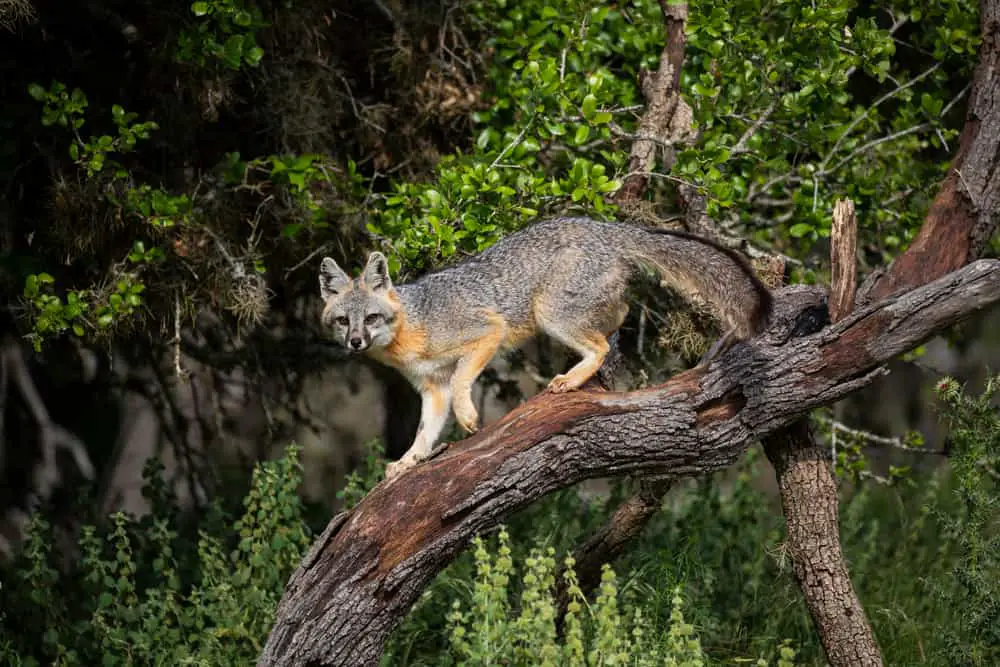
Urocyon fox species include the gray fox and the island fox, and the considered extinct Cozumel fox. Gray and Island foxes are found in the Western Hemisphere.
- Island Fox – Urocyon littoralis
- Gray Fox – Urocyon cinereoargenteus
- Cozumel Fox – Urocyon sp. nov
Lycalopex Foxes Species
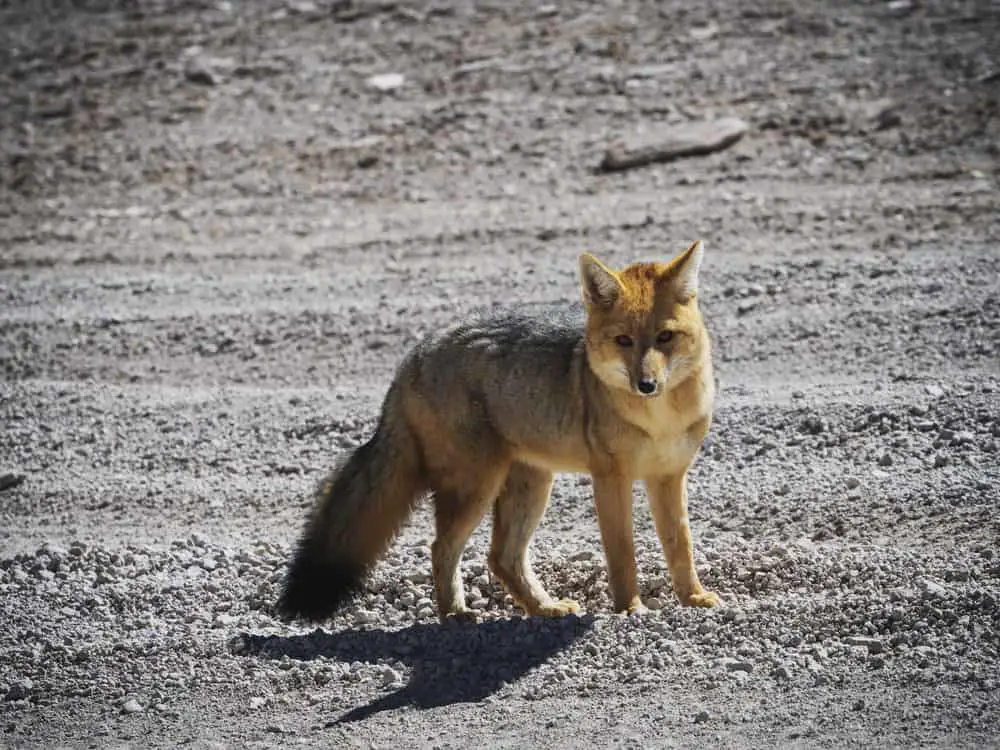
Despite their names, the South American Foxes are not true foxes but a unique canid genus related to jackals and wolves. They look like foxes due to convergent evolution.
- Hoary Fox or hoary zorro – Lycalopex vetulus
- Pampas Fox – Lycalopex gymnocercus
- Sechuran Fox – Lycalopex sechurae
- Culpeo Fox – Lycalopex culpaeus
- Darwin’s Fox – Lycalopex fulvipes
Otocyon Fox Species
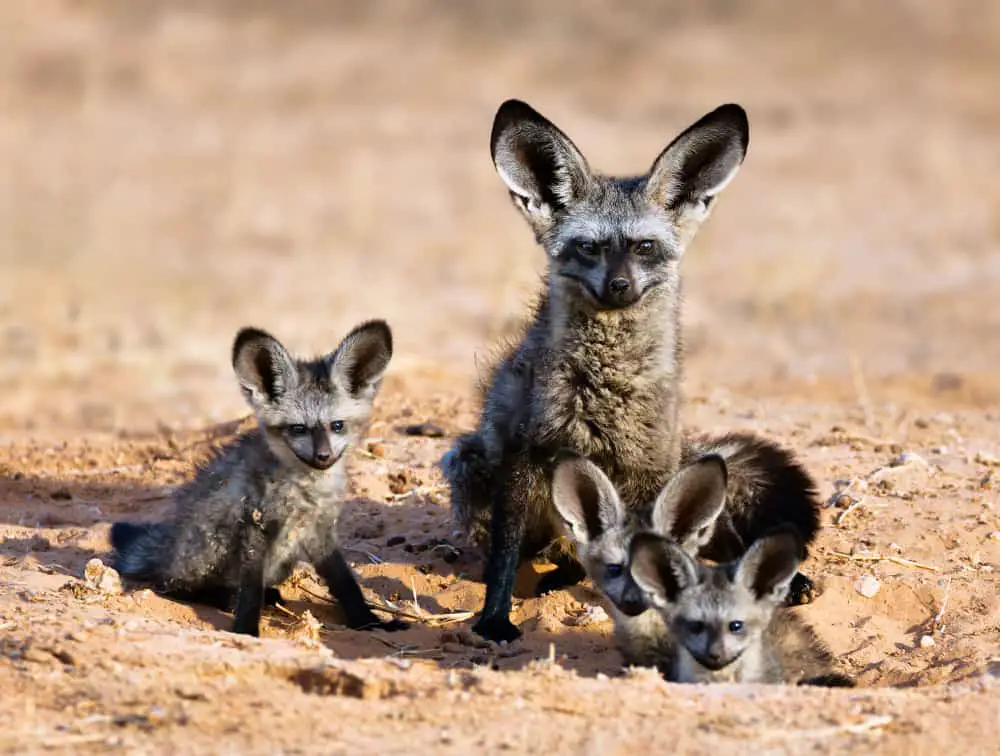
- Bat-eared fox – Otocyon megalotis
Cerdocyon Fox Species

- Crab-eating fox – Cerdocyon thous
Five Facts About Foxes
1. Foxes and cats are alike
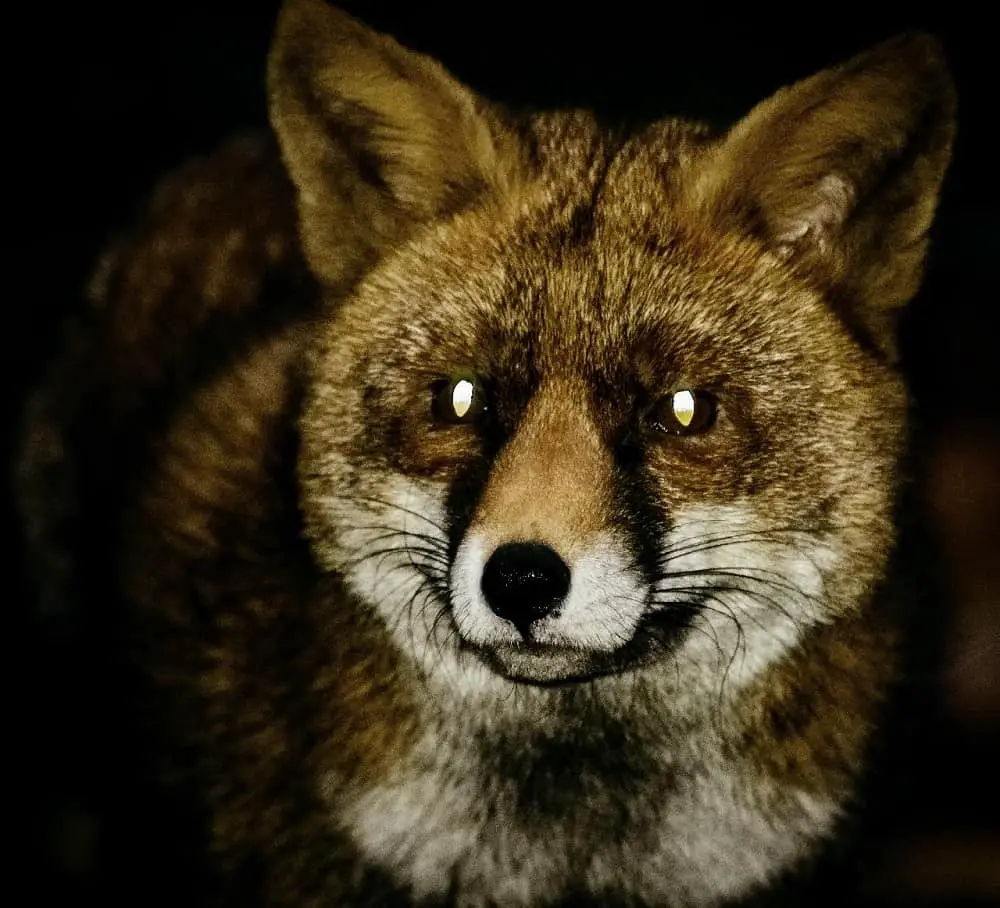
Like cats, foxes are nocturnal with vertically slanted pupils that allow them to have greater visibility in the dark. Foxes have sensitive whiskers and spines on its tongue, just like cats. They use their whiskers to navigate and stalk their prey like cats. They also like to climb trees. Grey foxes have retractable claws, just like cats.
Grey foxes also look like cats, while red foxes resemble dogs. Foxes even walk like cats, using the balls of their feet to stalk their prey quietly.
2. Foxes can make 40 different sounds
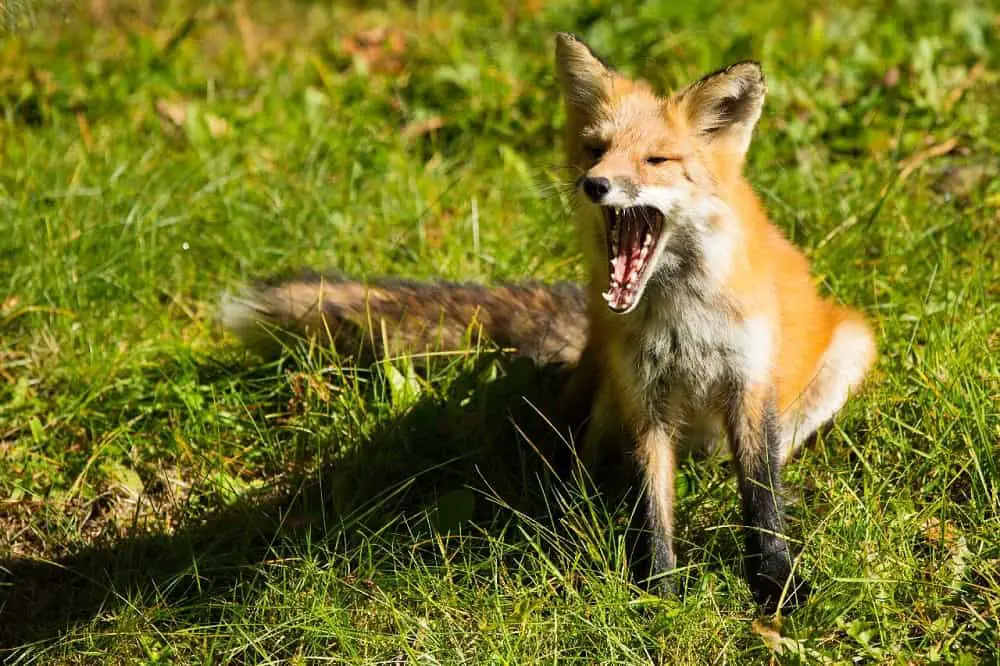
Foxes can produce up to 40 vocalizations. The most heard vocalization is their scream-like howl everyone heard at some point in time.
Guttural chattering or gekkering is also the most common sound made by foxes, usually made during a fight or alteration. Foxes are territorial, and when another fox crosses over into its territory, they are likely to chatter loudly back and forth in defense of their territory.
3. Foxes have excellent hearing
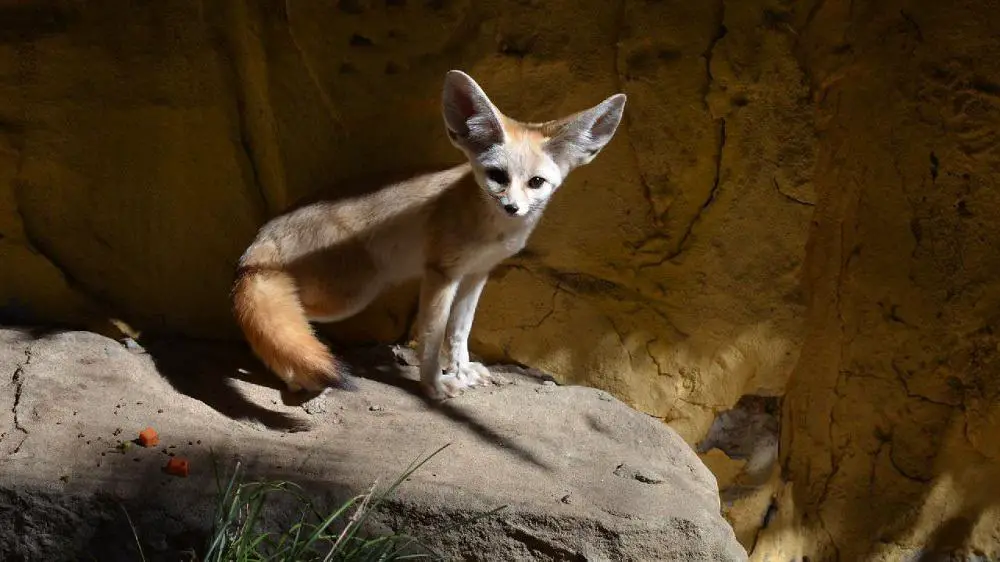
Foxes have excellent hearing that helps them find prey even under the ground.
They can use the Earth’s magnetic field for hunting. Like sharks, birds, and turtles, some other animals have this “magnetic sense,” but the fox is the first to use the magnetic field to catch prey, making them fierce predators with excellent hearing.
4. Foxes are very playful

Foxes are typically playful animals who love to play. They have been known to snatch golf balls from golf courses to play with them. They will play alone and with other foxes and have been seen playing with deer. This playful behavior establishes a social hierarchy amongst foxes and starts at a young age.
5. Arctic foxes don’t shiver until -94°F (-70°C).
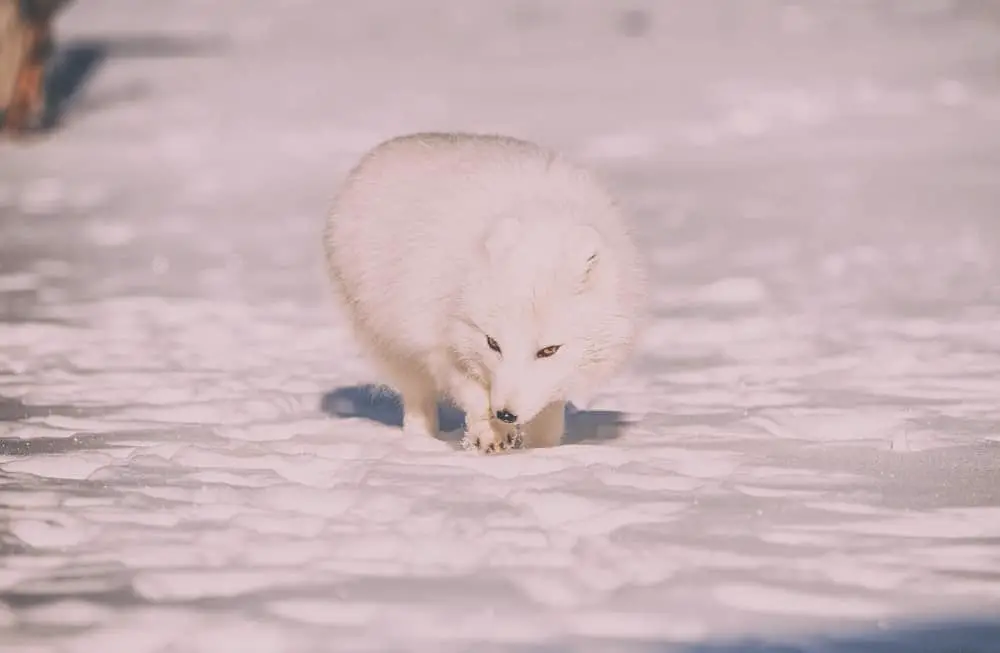
Arctic foxes live in the most extreme cold northern parts of the world and can deal with freezing temperatures than most animals. They don’t start to shiver until the temperature drops below -94° F / -70° C.
The Arctic foxes’ coat is so thick and dense it traps in warmth to help the fox withstand the frigid temperatures. They wrap their thick bushy tails around their bodies for an extra cover of heat. Arctic foxes can double their body weight and build up fat that helps them survive when food is scarce in the winter months.
Conclusion
Vulpes, the first fox genus, includes the 12 types of foxes known as true foxes. Researchers identified 12 living species of true foxes and four extinct species using fossil records. The different types of foxes are classified into six living genera that include 23 species and dozens of subspecies.
Whether you think foxes are cute and fluffy or cunning and sly, there’s no denying foxes are extraordinary animals.
Sources:
National Geographic: Fennec Fox
National Geographic: Arctic Fox
Animalia: Blanford’s Fox
ANimalia: Tibetan Fox

